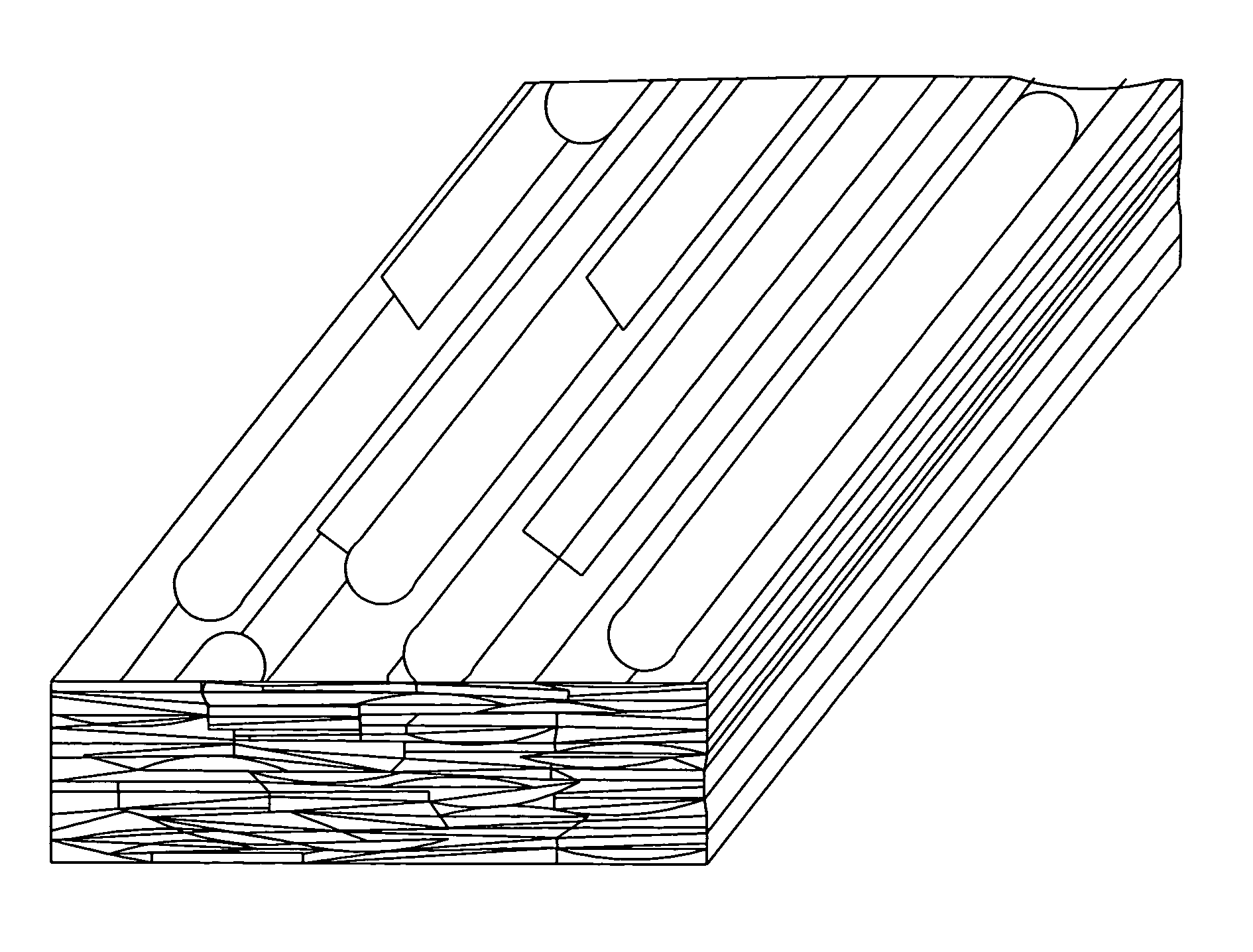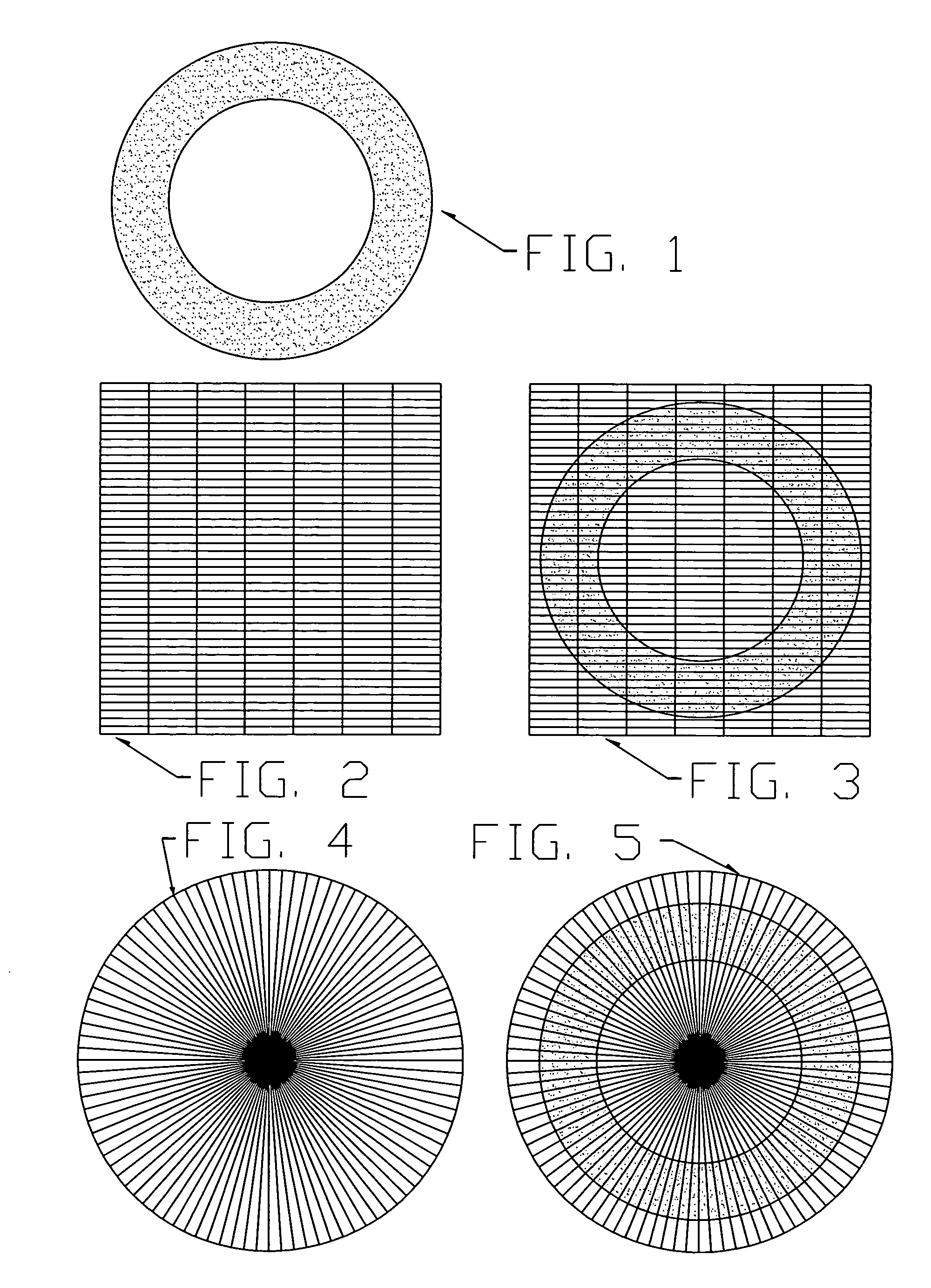Bamboo chip treatment and products
a technology of bamboo chips and products, applied in the field of bamboo chip treatment and products, can solve the problems that the standard process of manufacturing plywood or other wood products cannot be applied to bamboo logs with practicality, and the bamboo trees are normally not suitable for the production of bamboo boards or plywood, and achieve the effect of small void spaces and uniform distribution
- Summary
- Abstract
- Description
- Claims
- Application Information
AI Technical Summary
Benefits of technology
Problems solved by technology
Method used
Image
Examples
Embodiment Construction
[0035] Thin elongated bamboo chips are produced by two methods depending on the quality required. For low quality, one may run the bamboo shoot through a rotating blade machine to produce thin chips. FIG. 1 shows an end view of the bamboo shoot.
[0036] For higher quality grade beams, the bamboo shoot may be cut into pieces of under 6″ in length. Then one splits the shoot lengthways several times parallel to its length to produce thin bamboo chips of under ⅛″ in thickness, although chips of {fraction (1 / 16)}″ in thickness produce the best results. FIG. 2, shows the vertical and horizontal blades of a bamboo splitting tool. FIG. 3 shows an end view of the shoot being split vertically and horizontally on the tool where the maximum width used is ¾″. FIG. 4 shows a radial splitting tool. FIG. 5 shows the tool splitting end view of the shoot radially where the chip width is the thickness of the bamboo shoot wall. FIGS. 6 and 7 shows profiles of the thickness and width of the final chips. ...
PUM
| Property | Measurement | Unit |
|---|---|---|
| Fraction | aaaaa | aaaaa |
| Humidity | aaaaa | aaaaa |
| Length | aaaaa | aaaaa |
Abstract
Description
Claims
Application Information
 Login to View More
Login to View More - R&D
- Intellectual Property
- Life Sciences
- Materials
- Tech Scout
- Unparalleled Data Quality
- Higher Quality Content
- 60% Fewer Hallucinations
Browse by: Latest US Patents, China's latest patents, Technical Efficacy Thesaurus, Application Domain, Technology Topic, Popular Technical Reports.
© 2025 PatSnap. All rights reserved.Legal|Privacy policy|Modern Slavery Act Transparency Statement|Sitemap|About US| Contact US: help@patsnap.com



